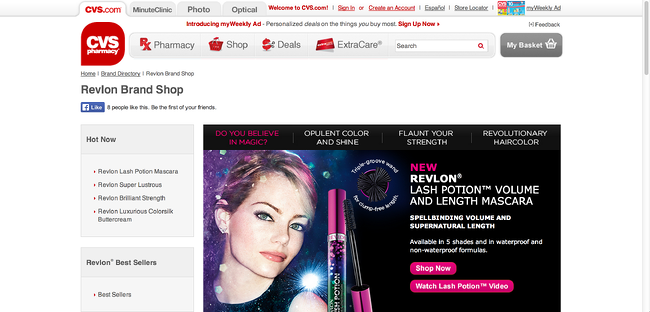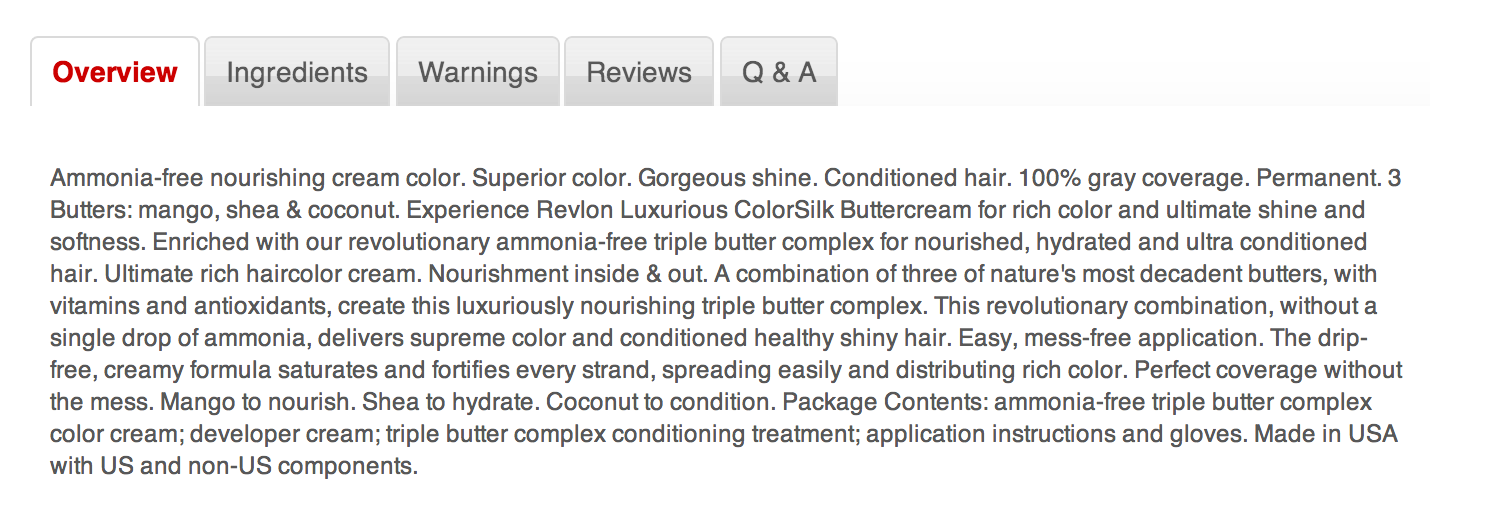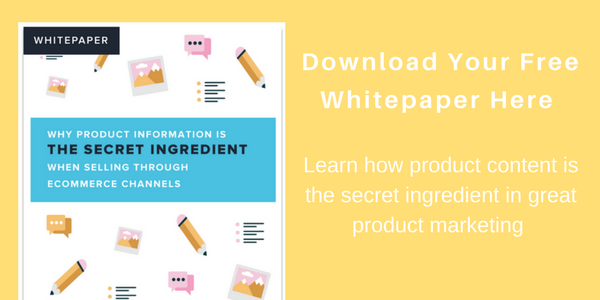A Revlon Example: How Poor Product Descriptions Can Harm Brand Image

Building up an awesome brand doesn't stop once you've landed an A-list celebrity as your brand ambassador. (Though it certainly does help!)
Maintaining that brand image and standard you've worked so hard to create requires consistency in all aspects of your company output - including the descriptions you attach to your products.
But no brand is perfect. Cosmetics heavyweight Revlon, for example, has spent years cultivating its image as chic-yet-affordable makeup, but the brand's star-quality is somewhat diminished by its erratic product descriptions on CVS.com.
We don't mean to pick on Revlon here - because getting great product content to all your distribution channels really is hard, but this example illustrates why you can't neglect the importance of descriptions on branding, as well as sales.
Revlon on CVS.com: An Overview
Search "Revlon" on CVS.com and the site takes you to the Revlon "Brand Shop" - a page that features the brand's product categories, bestsellers, and lots of Emma Stone.
While this adds extra credibility to the brand, it also creates a kind of digital "storefront" that sets the expectation of a uniform shopping experience, much like if a customer were shopping on the Revlon brand website.

Once we started digging into these Revlon products, however, we found that the shopping experience was far from consistent. The biggest giveaway?
Inconsistent product descriptions
Product Descriptions Deconstructed
We started clicking through some of the brand's best sellers. First up: the Revlon Super Lustrous line of lipsticks and lip glosses. The first product offering was the "Plum Velour" - a rich, dark shade of lipstick that brought a number of delectable adjectives to mind.
But we clicked on the product, and this is all the description we got:

The description for Revlon Super Lustrous Lipstick, Plum Velour 850
No story, no delectable adjectives - just the brand website (sans link) and a piece of information that is irrelevant to how the product looks, wears, or is made. Not only did this copy tell us nothing valuable about the product, but it also didn't make us feel like Revlon was putting quality effort into selling this product on CVS.com.
We checked out a few more best sellers and found these descriptions:

The description for Revlon Brilliant Strength Nail Enamel, Embody 200

The description for Revlon Luxurious Colorsilk Buttercream Permanent Hair Color, Brown Black 20N
The first gave us scarcely more information than the description about the lipstick (and made it clear that there's copying and pasting at play). The second was an overload of features, benefits and ingredients, all so disjointed and lacking in a cohesive narrative that we gave up reading about halfway through.
Either way, for folks who've never interacted with these products before, the shopping experience was rather frustrating. Not only did lack of quality control seem inconsistent with Revlon's chic brand image, but the absence of persuasive marketing copy made us unwilling to make a purchase.
A Better Example of a Product Description
We ended our browsing by clicking on the Lash Potion Volume and Length Mascara, which is listed first as a Revlon bestseller and featured prominently in an ad in the Brand Shop, complete with a large graphic of Emma Stone. For such an aggressively marketed product, this one definitely needs a strong description.

What we found doesn't quite tell a compelling story, but there are definitely things that this description does better than the others. For one, it is full of hyperbolic adjectives and verbs similar to the ones found on the Brand Shop ad. It even recycles the word "spellbinding" (albeit in different spellings), which is an overall plus for consistent brand messaging.
And at three lines of copy, it still told more of a cohesive narrative about the product than most other descriptions in the Revlon catalog.

The description for Revlon Lash Potion Volume & Length Waterproof Mascara by Grow Lucious, Blackened Brown 003
The Effect of Product Descriptions on Branding
If there's one thing you take away from this post, let it be this:
Getting your product descriptions consistent has tremendous benefit for your branding.
As our experience with Revlon illustrates, there are two ways to achieve this consistency:
Be consistent with your brand image and standard:
Use language that mimics the wording you use across ads, your website, and other output. Make sure that your copy reflects the standard of quality your brand holds itself to.
Be consistent with other product descriptions:
Make sure that customers have a cohesive shopping experience as they browse products across your brand. Everything from length to tone to types of information included should be similar across products.
Once you've got that all down, your A-list celebrity endorser has much less work to do.
Want more articles about health and beauty in e-commerce. Check out these two posts: How Health and Beauty Mobile Sites Compare to Online and Can Trendy Health and Beauty Sites Avoid the Social Shopping Trend?
Written by: Emily Saka
Emily Saka (she/her) is a former content marketing manager at Salsify, where she spearheaded the development of the company’s original content marketing strategy.
Recent Posts
How Many Digital Sales Channels Do Shoppers Review Before Purchasing Products?
What the Data Says About Consumer Interest in AI Shopping Agents
How Retailers Can Use Geolocation To Create Personalized Shopping Experiences
Subscribe to the Below the Fold Newsletter
Standing out on the digital shelf starts with access to the latest industry content. Subscribe to Below the Fold, our monthly content newsletter, and join other commerce leaders.


.svg)